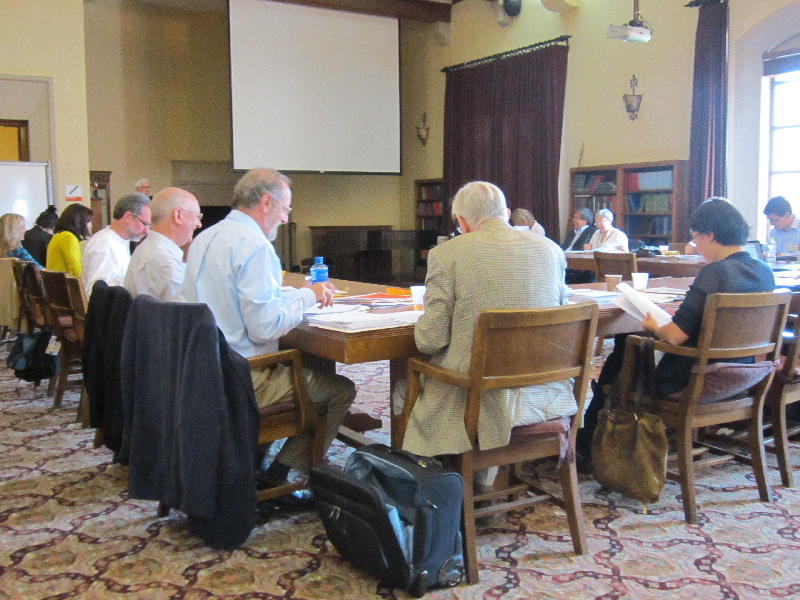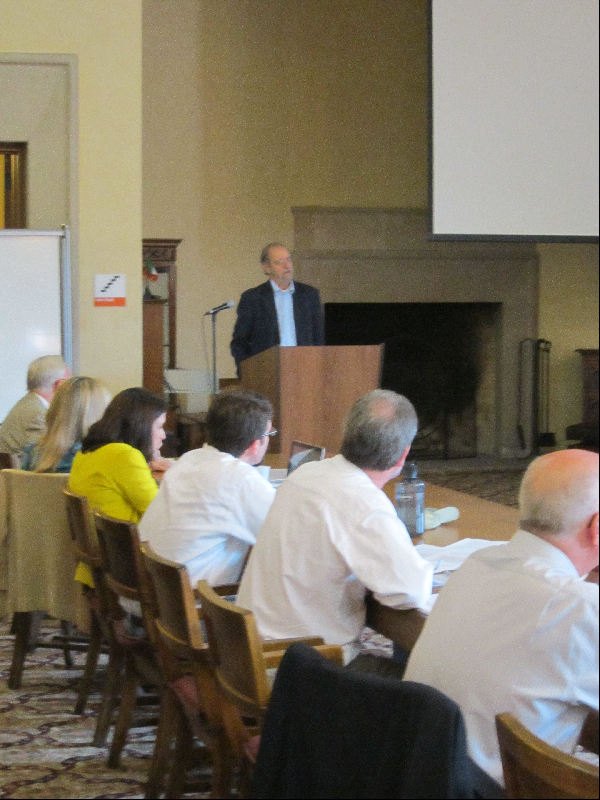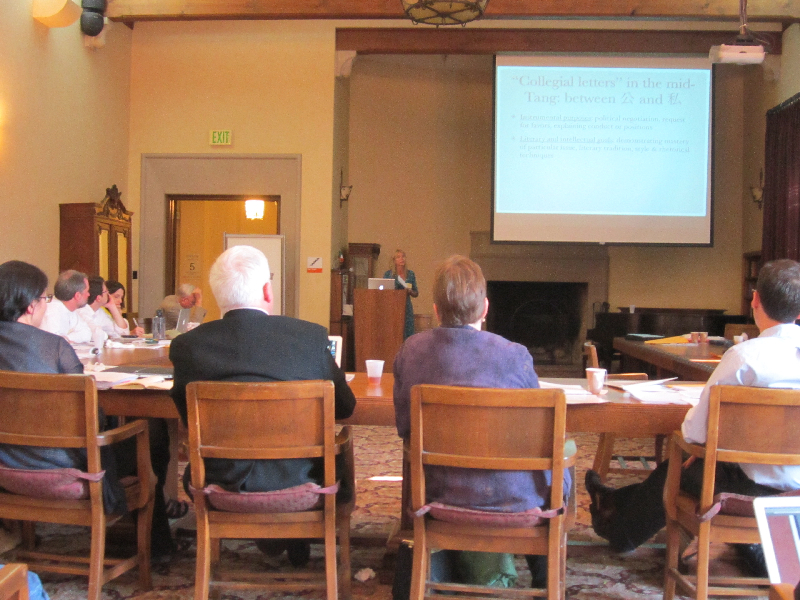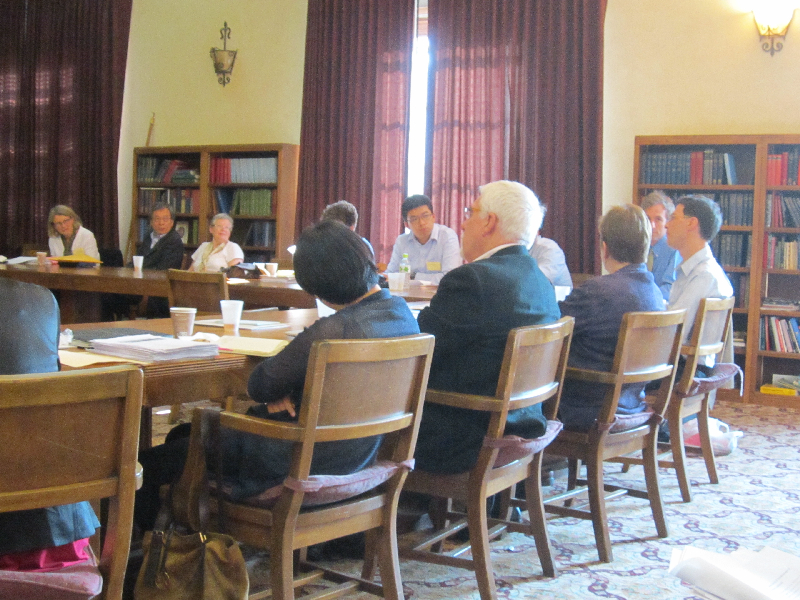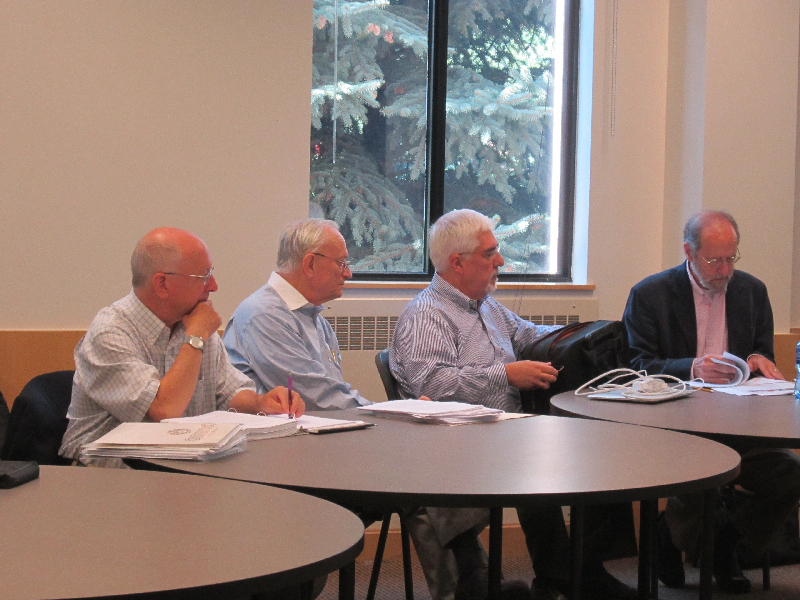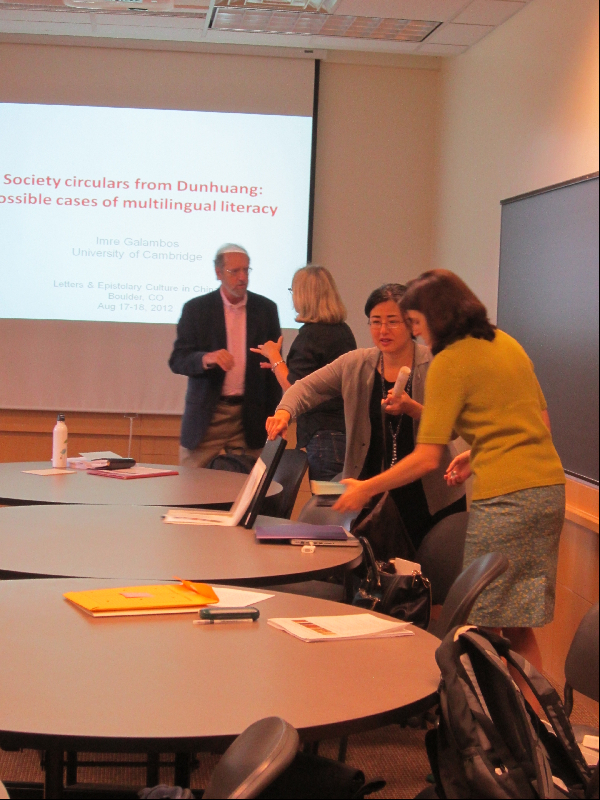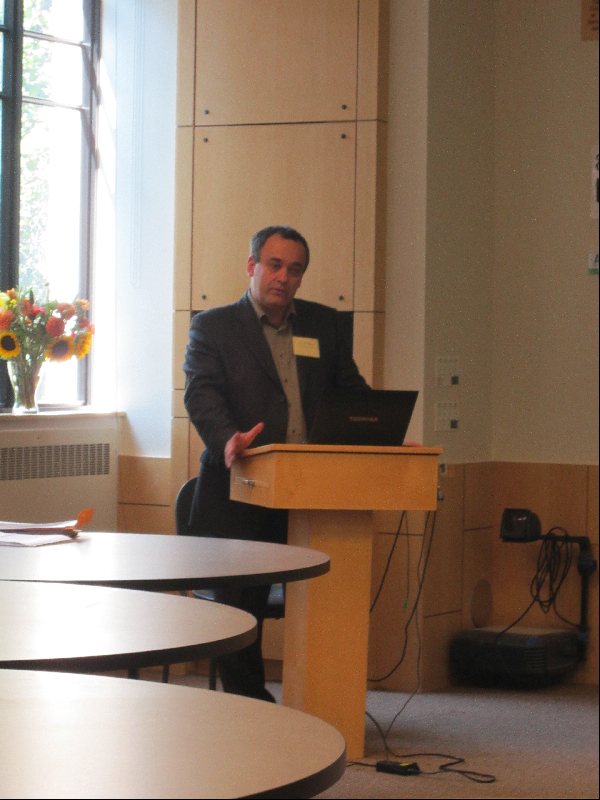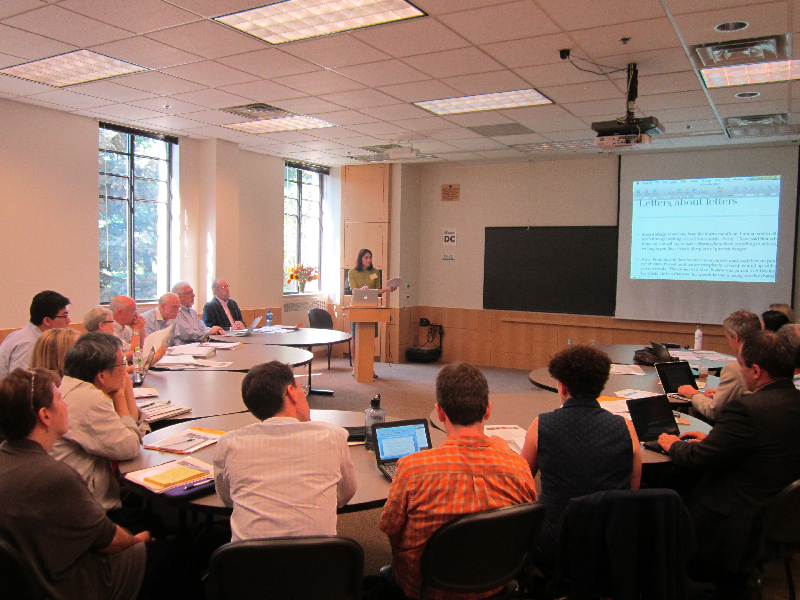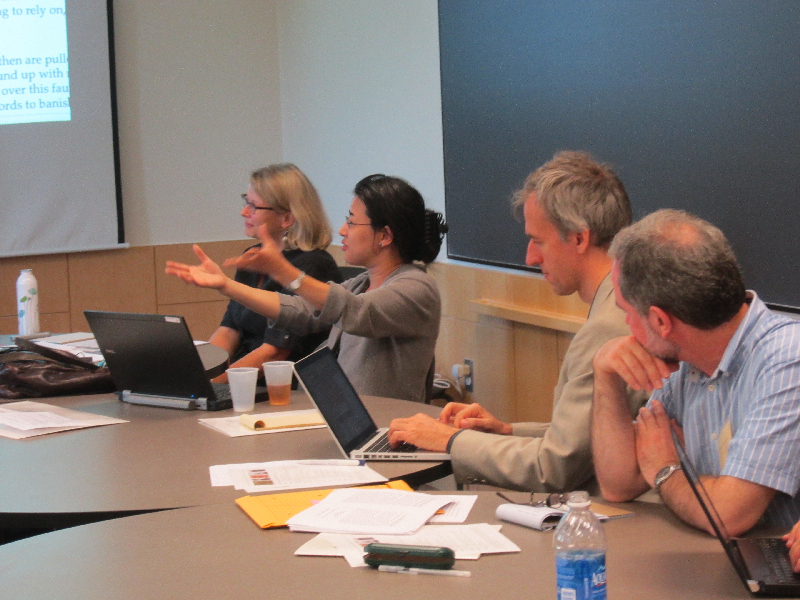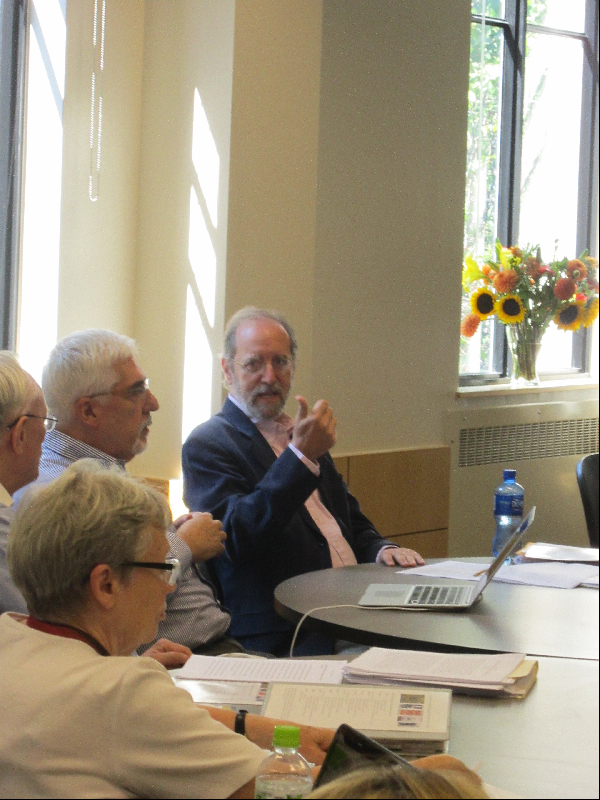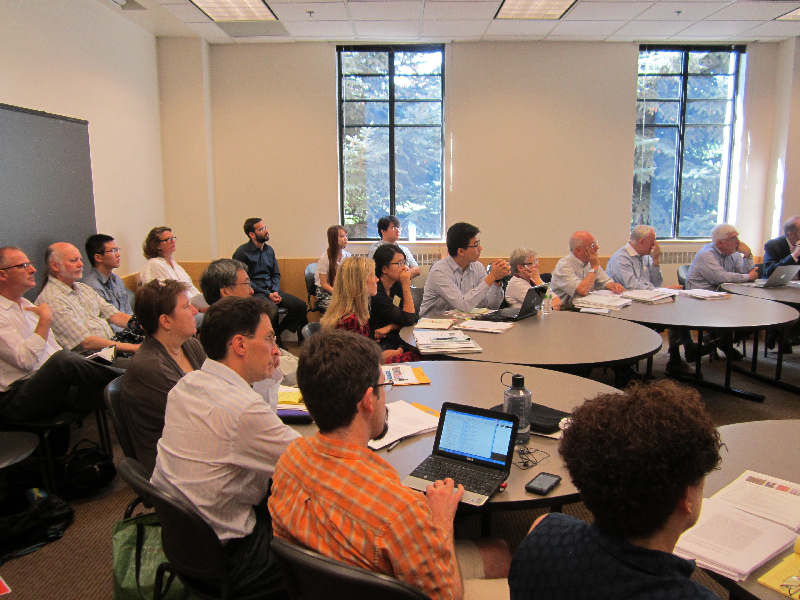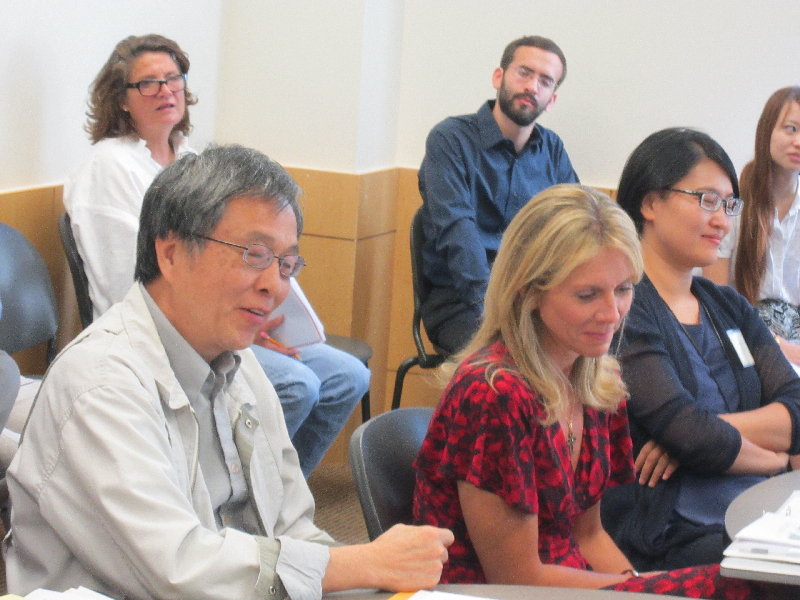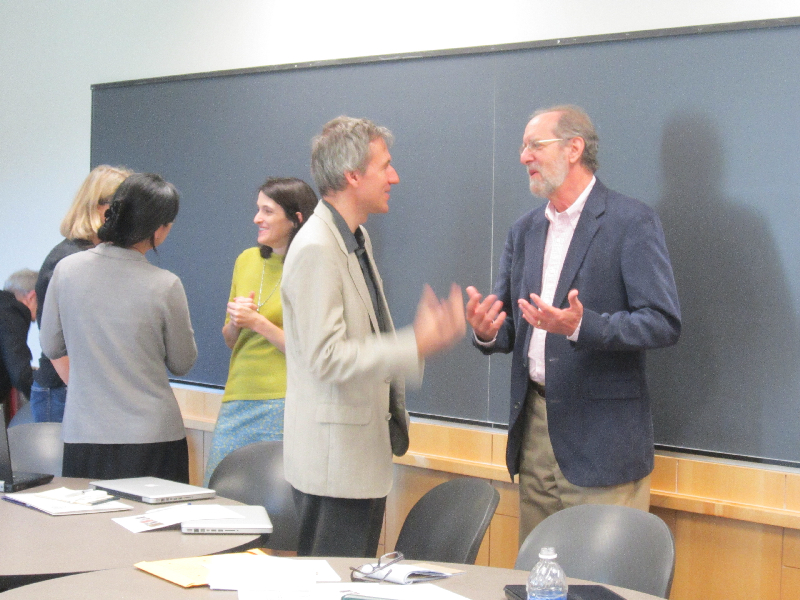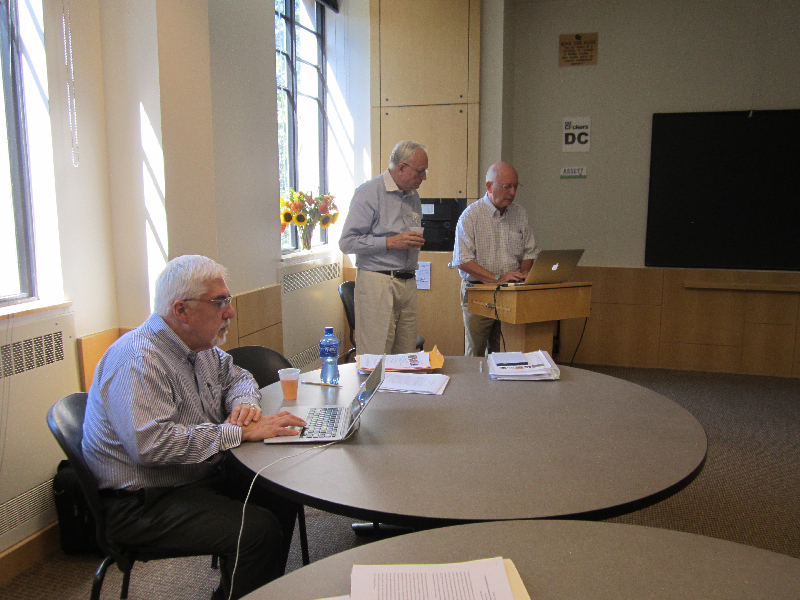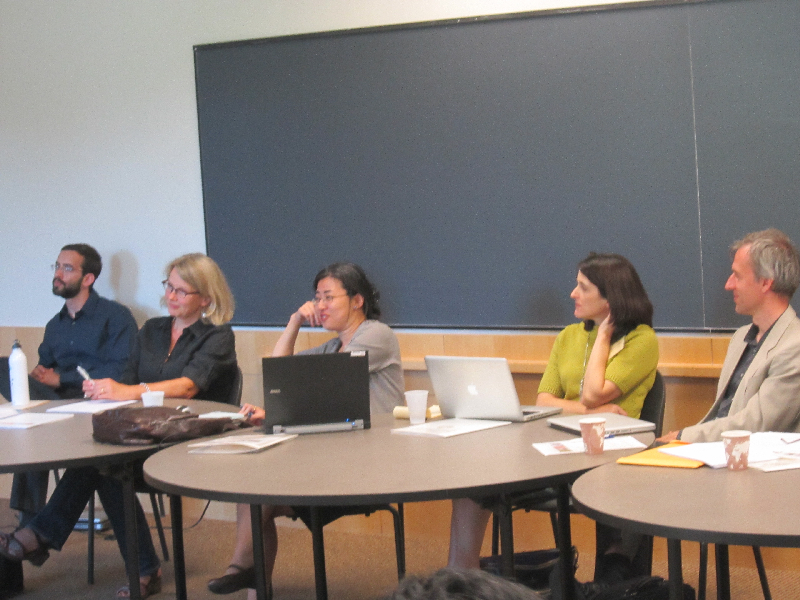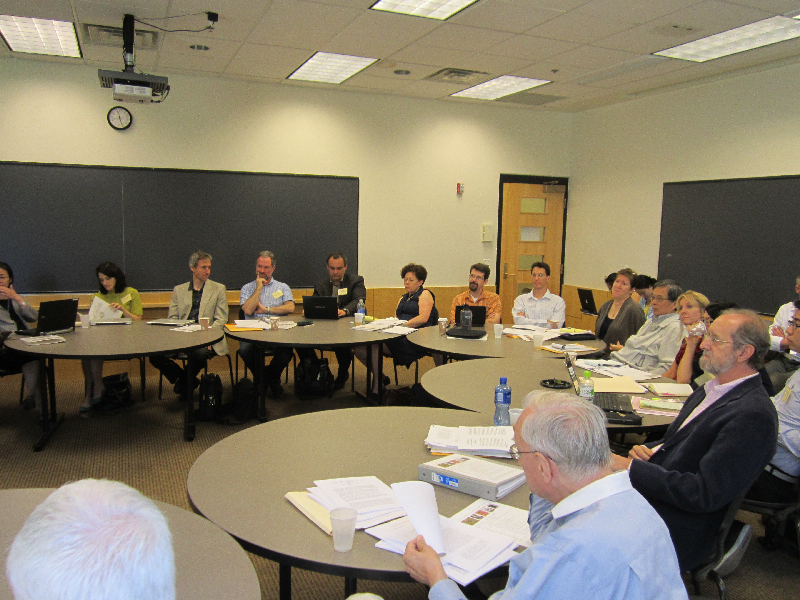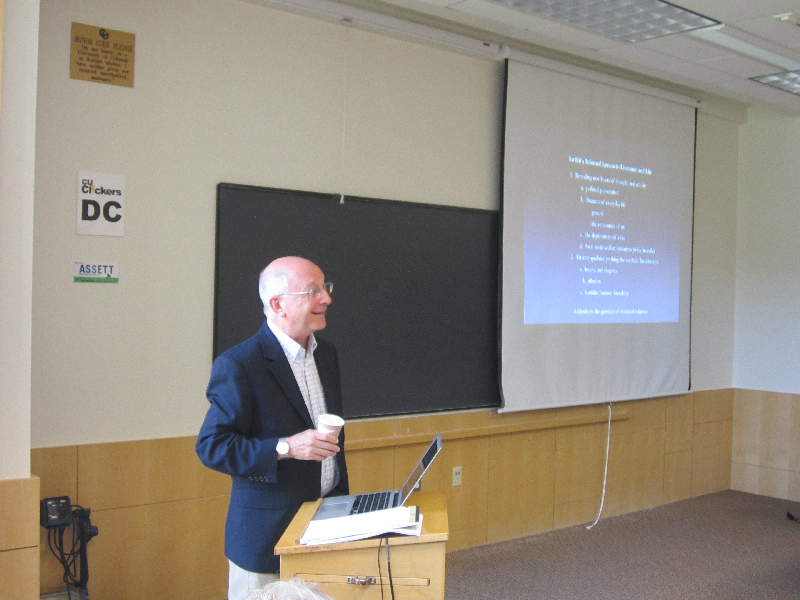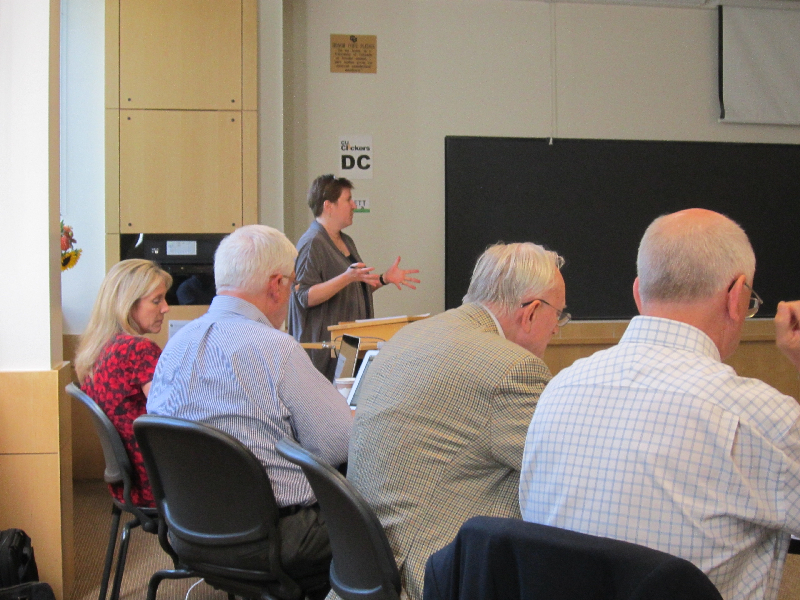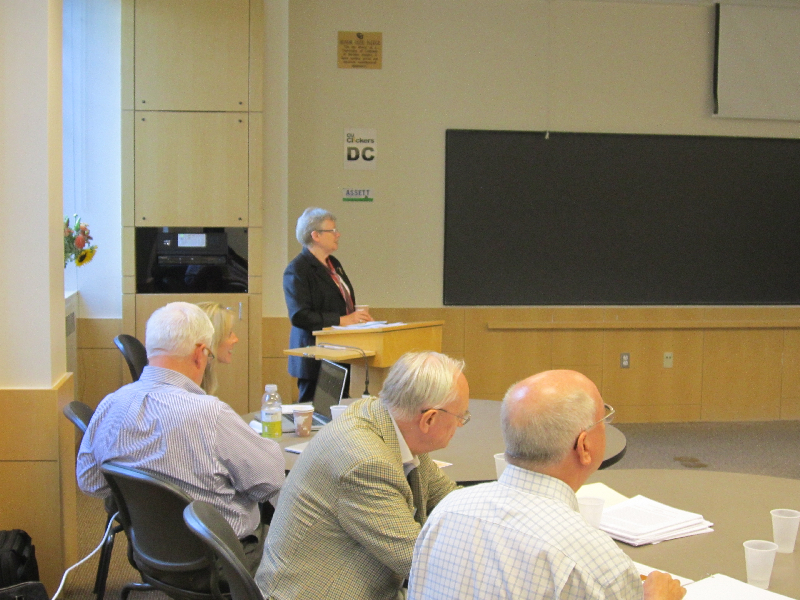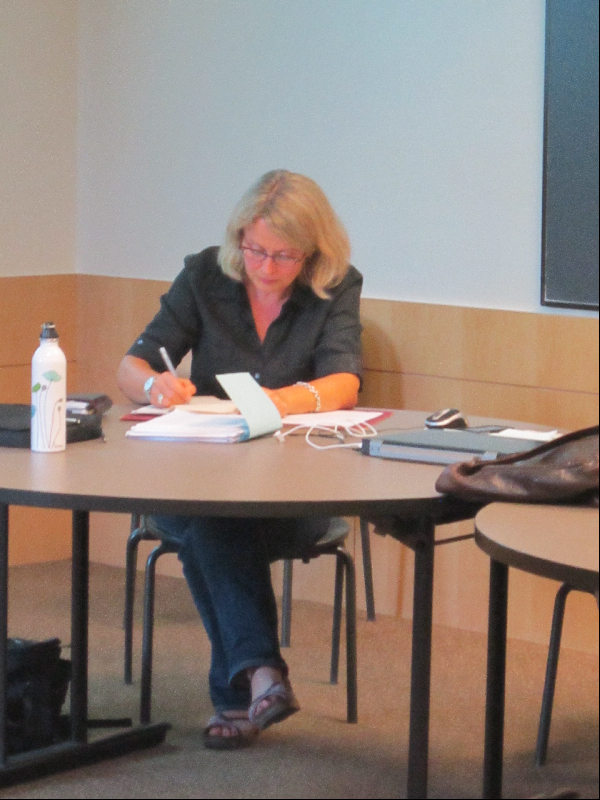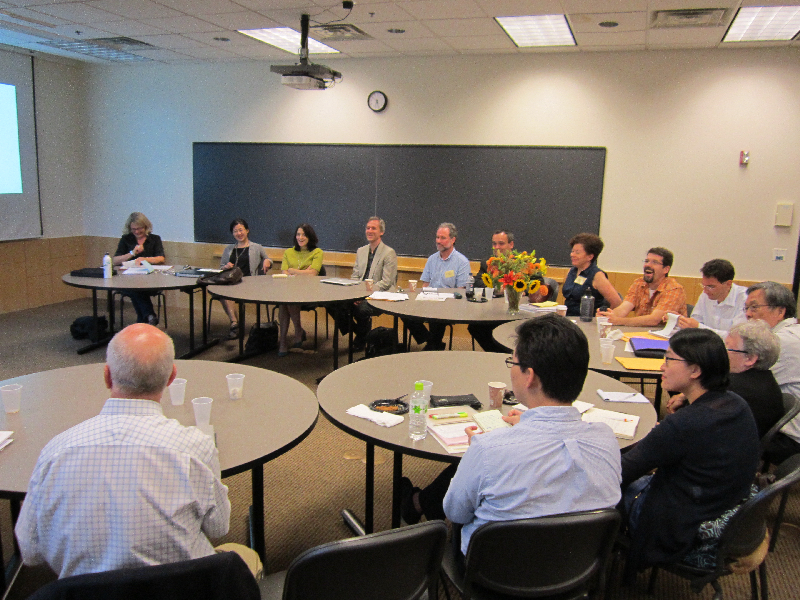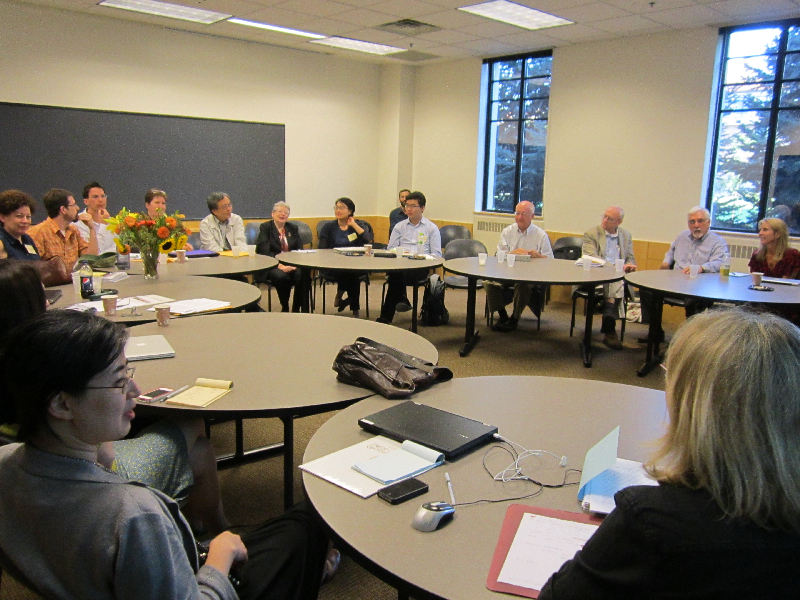Abstracts
PART I: MATERIAL ASPECTS OF CHINESE LETTER WRITING CULTURE
Reconstructing the Postal Relay System of the Han Period
Y. Edmund LIEN
From the archaeological finds of the last eighty years, especially through the discovery of Xuanquan zhi 懸泉置, a picture of the postal relay system of the Han period emerges, which shows that its function covers mail delivery, reconnaissance activities, and provision of chariots and rest-houses for traveling officials. This picture complements and revises our understanding of the ancient postal system gleaned from the received classical texts alone. Wooden and bamboo slips dated to the Han also help to provide clarity about the evolution of the notion of you 郵 from that in the fifth century BCE youting 郵亭 in the Mozi 墨子 to the varied usage of you and ting in the Han period. This chapter outlines the structure of the Han postal system, including mail records and legal codes for postal services and a partial route map of Dunhuang.
Letters as Calligraphy Exemplars: The Long and Eventful Life of Yan Zhenqing's (709-785) "Imperial Commissioner Liu Letter"
Amy McNAIR
Letters have been collected as examples of calligraphy since the Later Han dynasty. Due to the traditional belief in graphology, calligraphy is seen as a trace of the author's personality that allows one to "see the man in his writing." When collectors have a letter mounted in a scroll, it becomes part of a living document when later viewers inscribe their responses in colophons. Famous early letters were also engraved in stone in fatie 法帖, or "model letters compendia," from which ink rubbings were taken and distributed as elegant gifts. They also became "performance pieces," which artists creatively re-interpreted as a way of demonstrating their competence in canonical calligraphy styles and their own ingenuity. My case study for these developments is a brief letter by the renowned Tang-dynasty calligrapher Yan Zhenqing that is exemplary not only for its gestural cursive-script characters and its author's reputation for loyalty, but also for the rich documentation of its thirteen-hundred-year life and manifold responses by critics and artists.
Chinese Decorated Letter Papers
Suzanne E. WRIGHT
Through the Tang dynasty, decoration of letter papers was accomplished primarily by dying or the treatment of the paper surface. By the late tenth century, papermakers were using blocks to impress botanical and animal designs into paper, but it is not until the eleventh century that we have extant examples of patterned letter paper. Surviving examples of decorated letter papers are rare until the second half of the Ming, when the collection of letters began in earnest. Papers from the Song through early Ming bear designs created through the use of wax resist. In the late Ming, however, woodblock printed designs, both borders and other pictorial images, became increasingly popular, and at least two catalogs of letter paper designs were published. In the Qing dynasty, images became larger and papers were often brightly colored, so that the decorated ground begins to demand as much attention as the letter text.
Material and Symbolic Economies: Letters and Gifts in Early Medieval China
Xiaofei TIAN
This chapter examines a group of letters in early medieval China, specifically from the turn of the third century and from the early sixth century, about gift-giving and receiving. Gift-giving is one of the things that stand at the center of social relationships across many cultures. It is both productive of social relationships and affirms them; it establishes and clarifies social status, displays power, strengthens alliances, and creates debt and obligations. In the letters discussed in this chapter, the transaction between letter writer and letter recipient happens on both material level and discursive level. The letters constitute a verbal and material economy that is closely tied to the production of value of the circulated objects, and enable a new balance to be established between donor and recipient.
PART II: CONTEMPLATING THE GENRE
Letters in the Wen xuan
David R. KNECHTGES
The Wen xuan compiled at the court of Xiao Tong (501-531) contains a large selection of epistolary writings. The largest number of these pieces is found in the category of shu (letters), which occupies three juan of the anthology. However, there are other categories that also contain epistolary writings, notably the shang shu (letter of submission) and qi (communication or "thank you letter"). This article examines: (1) The content of the selection to determine what the Wen xuan compilers considered to be model examples of the form; (2) The possible sources of the selection; (3) What the selection tells us about the status of letter writing in the Wei, Jin, Nanbeichao period. The article also contains a comprehensive bibliography concerning each of the letters contained in the Wen xuan.
Between Letter and Testament: Letters of Familial Admonition in Han and Six Dynasties China
Antje RICHTER
Addressed to younger members of one's family--often sons, nephews, or younger brothers--letters of familial admonition became one of the most popular types of letters throughout Chinese history. This chapter sketches the emergence of this subgenre in the Han dynasty and its further development in the Six Dynasties, focusing on typological and formal features as they present themselves in the about sixty transmitted admonitory letters from these periods. In the case of the admonitory letter, the generally ambiguous genre of the letter specifically borders on and even overlaps with the genres of family instruction (jiajie/-xun 家誡/訓) and testament (yiling/-yan 遺令/言). This affinity becomes manifest in two kinds of admonitory letters, which I label interventive and testamentary and which not only differ in motivation and intention, but also in their choice of rhetorical devices.
The Space of Separation: An Example from the Early Medieval Tradition of Four-Syllable "Presentation and Response" Poetry
Zeb RAFT
This chapter uses a case study to examine the letter-poem in early medieval China. It begins by tracing the history of the four-syllable verse "presentation and response" tradition. It is argued that such poem exchanges open up and exploit a literary "space of separation." A pair of poems is presented in full, contextualized through a discussion of the authors' lives and the kind of social relationship that produced the poem exchange. The essay then explores the particular "space of separation" instantiated by these two poems, presenting them as both expressions of personal intimacy and presentations to a wider public audience.
Letters and Memorials in the Early Third Century: The Case of Cao Zhi
R. Joe CUTTER
This study examines two genres of epistolary writing by the famous third-century literary figure Cao Zhi (192-232). It begins by presenting a translation and discussion of both Cao Zhi's well-known letter to Wu Zhi ("Yu Wu Jizhong shu") and Wu Zhi's response ("Da Dong'e wang shu"). In the later part of the essay, four memorials by Cao Zhi are also considered. It is shown that both the letters and the memorials are communications of an essentially personal nature, although each has a more or less direct agenda. Dictated by genre and occasion, there are differences in register, style, and level of intimacy between the letters and the memorials, and the letters are characterized as more open-ended and contingent.
Liu Xie's Institutional Mind: Letters, Administrative Documents and Political Imagination in Fifth and Sixth Century China
Pablo Ariel BLITSTEIN
In fifth- to sixth-century China, the "private" genre of letters was discussed together with the "public" genres of administrative writing. What does this association between letters and administrative texts tell us about the social meaning of these genres? Is it really possible to make a distinction between "private" and "public" genres when we deal with fifth- to sixth-century ideas about epistolary and administrative writing? How was the relation between epistolary and administrative writing conceived? Taking courtly and literati life as the sociological starting point for my analysis, I propose to show that, in a social and institutional world where political relations were conceived as personal relations, epistolary and administrative genres were conceived as contiguous forms of writing which were ritually defined according to the role and status of senders and addressees.
Bureaucratic Influences on Letters in Middle Period China: Observations from Manuscript Letters and Literati Discourse
Lik Hang TSUI
In this article I historicize the epistolary genre in middle period China and argue for a dynamic view of it. I do this by examining the influences of bureaucratic documents on letters in Song China, especially those observed in two extant manuscripts in the zhazi subgenre from the twelfth century. I then discuss how literati scholars accounted for these bureaucratic influences in correspondence, notebooks, and encyclopedias. I argue that the writing conventions of epistolary subgenres were constantly changing as a result of this influence, and letter writers were fully aware of these changes while they chose how to write to other individuals. The discussions in this article aim to shed light on one of the important aspects of traditional Chinese epistolary culture, namely, the impact of bureaucratic practices on the writing conventions of personal letters.
PART III: DIVERSITY OF CONTENT AND STYLE
1. Informal Letters
Private Letters from Early Imperial China
Enno GIELE
"Private Letter Manuscripts from Early Imperial China" introduces to a group of archaeologically excavated documents that can be singled out because of shared characteristics in form and content. The nine specimens that are translated and closely annotated derive from Juyan (Inner Mongolia), Dunhuang (Gansu), Shuihudi (Hubei), and Tianchang (Anhui). They are written either on silk or on wooden boards or rods. Their language is analyzed and their existence is contextualized, among other things also with the ancient practice of writing greeting tablets. It is in these kind of letters of a decidedly private nature that we see many aspects of social life and cultural characteristics highlighted that are not reflected in other sources.
Su Shi's Informal Letters in Literature and Life
Ronald EGAN
Su Shi's voluminous informal letters (some fifteen hundred of them) provide glimpses of aspects of his life that are seldom seen in his other writings. This chapter looks first at the ways the letters enhance our understanding of certain aspects of his everyday existence (e.g., personal finances, circumstances in exile, sense of political persecution, etc.), contrasting at times the impression given by these letters with what we can glean from other of his writings. The chapter then moves on to examine the literary qualities of his letters. It is evident that even though these informal letters were not generally considered part of "literary writing" (wenzhang) at the time, Su Shi did attend to their literary qualities. He even cultivated a certain aesthetic of brevity and elegance in these short missives, and this appears to have been a self-conscious effort on his part.
The Letter as Artifact of Sentiment and Legal Evidence
Janet THEISS
This article presents a close analysis of letters included in the case file of a lawsuit involving an elite family from Zhejiang in the 1740s. Among them are sixteen love letters exchanged between a gentry wife and her lover (the tutor for her children), and several other letters exchanged between her husband, the family head, and her eldest son amidst the family crisis that ensued from her affair. Preserved as legal evidence, these letters were never intended for public view unlike published letters. They pose many complex problems of interpretation. The authenticity of the lover letters is called into question as the lovers assert that they are forgeries designed to slander them. Yet they provide a rare glimpse of one elite family's inner workings in a moment of profound dysfunction and have much to tell us about the function and meanings attached to epistolary communication in the mid-Qing.
Infinite Variations of Writing and Desire: Love Letters in China and Europe
Bonnie S. McDOUGALL
Love letters are a rare example of a truly universal phenomenon. They can be found among all literate civilizations, although literacy is not a prerequisite for sending or receiving them. They are among our most treasured possessions, although the materials are often commonplace and pass through others' hands. While we may wish to hide ours from others' eyes, we read others' letters with shameless pleasure. The real or imagined love letter has exerted an enduring fascination across the ages, but for all their moment in our intimate lives, love letters have seldom been systematically analyzed or theorized. Even their history is obscure: there is no possibility of knowing when the first love letters were written. European and Chinese love letters both have long indigenous traditions, yet when we compare their writers and readers, frequency and duration, topics and themes, media and materials, and functions and values, we find infinite combinations of writing and desire.
Writing from Revolution's Debris: Shen Congwen's Family Letters in the Mao Era
Jie LI
This chapter examines Shen Congwen's correspondences with his wife and sons in the Mao era. Besides a career change from author to connoisseur, this public writer also underwent an internal exile into private letters--an ever-threatened sanctuary of individual thoughts and feelings. Participating in land reform in the early 1950s, Shen meant to write about and for the new nation, but the literary embryos in his letters never materialized into publications, as his lyrical humanism failed as "literature for the masses." By the Cultural Revolution, Shen's letters came under intensified surveillance and were often censored, confiscated, and destroyed. Exiled to the countryside from 1969 to 1971, Shen struggled to preserve personal and cultural memory against the amnesia of the times. Bearing intimate testimony to a tumultuous era, these family letters identified less with the revolutionary storm itself than the debris it had left behind, awaiting reverberation from their belated readers.
2. Literary Letters
Captured in Words: Functions and Limits of Autobiographical Expression in Early Chinese Epistolary Literature
Matthew WELLS
This chapter discusses epistolary literature as a medium for autobiographical expression in early Chinese literature. It focuses on several prominent, well-known texts from the Han and Early Medieval Periods in order to explore what these letters have to tell us about the conditions and limitations of autobiography in early China. I ask how some texts came to be seen as exemplary "autobiography" from the epistolary genre, the way in which the authors employ generic formula to convey a sense of the themselves to the reader, and how early Chinese autobiographical letters may help us refine our thinking about the study of "life writing" as a general body of criticism.
Civil Examinations and Cover Letters in the Mid-Tang: Dugu Yu's (776-815) "Letter Submitted to Attendant Gentleman Quan of the Ministry of Rites"
Alexei DITTER
One practice for acquiring examination patronage that became common during the mid-Tang was to "circulate scrolls" (xingjuan 行卷). These were sometimes accompanied by "submitted letters" (shang shu 上書) that functioned like modern-day "cover letters," describing their authors' education, character, and ambitions. This study focuses on a cover letter written by Dugu Yu 獨孤郁 (776-815) to Quan Deyu 權德輿 (761-818), his "Letter Submitted to Attendant Gentleman Quan of the Ministry of Rites" 上禮部權侍郎書, using it to illustrate some of the rhetorical strategies and conventional objectives of the cover letter genre. It also examines Quan's response, his "Letter in Reply to Cultivated Talent Dugu" 答獨孤秀才書, reading it in order to explore how successful these rhetorical strategies may have been and how these letters were read and responded to by potential patrons.
The Inscription of Emotion in Mid-Tang Collegial Letters
Anna M. SHIELDS
This article explores the ways in which mid-Tang writers such as Bai Juyi, Han Yu, and Liu Zongyuan expressed strong emotion in their correspondence, focusing in particular on the two emotions of anger and affection. It examines the multiple strategies by which emotion could be encoded in writing: in rhetoric, through diction and style; in syntax, through the use of hypotaxis and parataxis; and at the smallest level of word choice, including the use of exclamatory and interrogative particles. The article argues that the earlier medieval examples of expressing emotion, whether from "high" literary models such as those found in canonical sources or from epistolary manuals, do not anticipate the affective range of mid-Tang letters. Therefore, the emotional expression of these letters should be seen as an important innovation in mid-Tang writing as a whole.
Halves and Holes: Collections, Networks, and Epistolary Practices of Chan Monks
Natasha HELLER
The letters of three generations of Chan masters--Gaofeng Yuanmiao 高峰原妙 (1238-1295), Zhongfeng Mingben 中峰明本 (1263-1363), and Tianru Weize 天如惟則 (d. 1354)--provide a window into the epistolary practices of Buddhist monks and the collecting decisions of their disciples. Monks and their disciples wrote letters to reflect on their own spiritual progress and internal state. In response to queries by students, monks also wrote letters to explain Chan teachings. Not all letters were doctrinal in nature: many letters had administrative functions, helping to fundraise or otherwise facilitating the affairs of the monastery. Like letters in the secular realm, monks also wrote letters to affirm social ties and to accompany gifts. For these Chan monks, the social and ritual function of epistolary exchange meant that letters did not represent "entanglements" in the same way that other literary endeavors did.
Letters as Windows on Ming-Qing Women's Literary Culture
Ellen WIDMER
What is it that we can hope to learn from the letters by Ming-Qing women that survive? A few possibilities are outlined. Part one aims to build a case that there was an increase in women's letter writing during these two dynasties. As well, the article looks into what we can learn from the earliest letters by women to be found in general collections of letters that began to emerge no later than the early Qing. Part two offers three examples of specific women and shows what their surviving letters can add to our store of knowledge about their own lives and more. The conclusion is that the letters of traditional Chinese women may not be as revealing as those fictionalized in Chinese stories or those of Western women, but they still have something new to tell us about writing woman of the Ming and Qing.
Epistolary Networks and Practice in the Early Qing: The Letters Written to Yan Guangmin
David PATTINSON
Yanshi jiacang chidu, or "Letters Kept at the Yan Family Home," is a collection of over seven hundred letters written to the early Qing official, poet and calligrapher Yan Guangmin (1640-1686). It is a rare example of a collection of letters from the late imperial period which we can be certain was never intended to be published. Although it does not contain all the letters Yan ever received, it is still likely to reflect the correspondence that a member of the scholar-official elite might receive. This chapter first surveys the range of topics covered in the letters. It then makes some preliminary comparisons with letters in letter collections published at about the same time as the Yan letters were being written, and suggests that many of the letters in the published collections may have been written with the possibility of public circulation in mind.
3. Open Letters
Aid and Comfort: Lu Zhaolin's Letters
Paul W. KROLL
One of the chief poets of the mid-seventh century, Lu Zhaolin (ca. 635 - ca. 684) suffered during the last dozen or so years of his life from a severe case of rheumatoid arthritis that left him palsied of hand and crippled of foot. He chose to live at increasingly farther removes from society and attempted at different times to compound medicines of seemingly alchemical nature in hope of curing himself. Three letters he sent in the early 680s to unnamed officials in the capital city of Luoyang, seeking assistance in obtaining rare ingredients for these medicines, are the subject of this chapter. They provide us with a very personal look into a kind of correspondence that is unusual in the medieval period.
She Association Circulars from Dunhuang
Imre GALAMBOS
Although the Dunhuang manuscripts primarily contain Buddhist texts, there is also a significant body of texts related to the economic and administrative affairs of the Dunhuang region. Among these are dozens of association circulars send out to members of local she associations, notifying them about upcoming events, such the time and place of annual meetings and celebrations. The circulars date to the ninth and tenth century and represent our chief source of information on the daily operations of such societies. Although not letters in the strict sense of the word, the circulars may be interpreted as a genre of epistolary texts which had a highly pragmatic purpose. They are extremely formulaic in their content and were most likely delivered to the addressees successively by a messenger who visited each of them in person. When taken together, they form a unique body of primary material that can shed light on how business correspondence functioned.
Between Writing and Publishing Letters: Publishing a Letter about Book Proprietorship
Suyoung SON
This chapter explores the ways in which the published letter served as a social medium in the eighteenth century. While publishing letters has often been approached by scholars in terms of the elevation of the letter as a literary genre, this chapter sheds light on circumstances in which the publication of a letter could contribute to the meaning a letter sought to convey. Through a close reading of a 1706 letter written by publisher Zhang Chao to fellow publisher Zhang Yongde during a dispute over the profits of the book that they co-published, I argue that the publication of the letter played a significant social role in sustaining book proprietorship at a time when few enforceable legal codes and regulatory institutions existed to protect book ownership.
Opinions Going Public: Letters to the Editors in China's Earliest Modern Newspapers
Natascha GENTZ
The introduction of new print technologies and establishment of modern newspapers in Late Qing China fundamentally changed the nature of the public sphere as well as conventional forms of public communication. From the earliest editions of newspapers, letters to the editor played a crucial role in this process. While letters have been published in edited book versions earlier on, the participation in debates on a daily basis also implied a transformation of the genre of letter writing. The paper looks at the production and selection processes of publications of letters to the editor in the earliest years of the Shenbao and presents a typology based on the analysis of sample sets of about 140 such letters published between 1872 and 1874. The paper further examines self-presentations of the writers through textual analysis as well as by classifying the pennames used by the writers. It concludes with a discussion of the function and impact of these letters to the editor.
2012 Workshop Program
Photos of the 2012 Workshop
